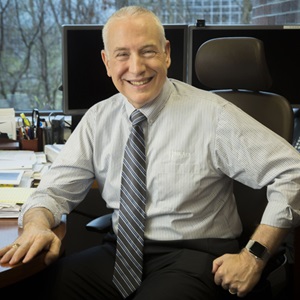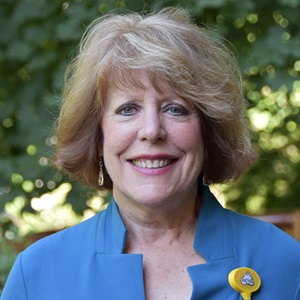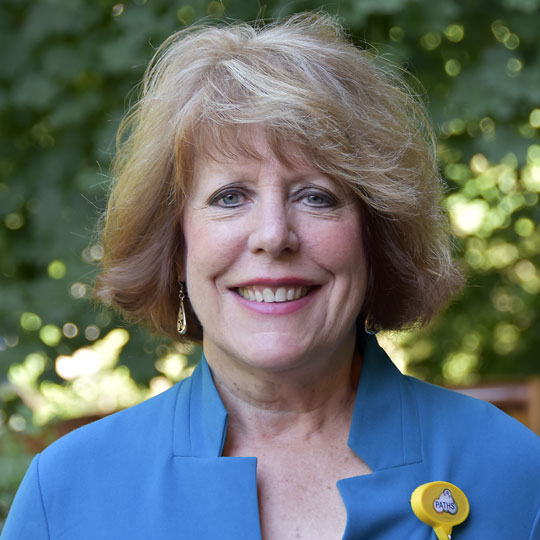Dr. Pate’s Prescription for Change
St. Luke’s Cy Gearhard: Nursing now and in the future

Nursing is a wonderful career choice. The need for nurses is only growing and so jobs are plentiful.
The range of nurse roles is also growing, allowing nurses many choices for type of work and opportunities for specialization. Most importantly, nursing is a job where you can truly make a difference in people’s lives and find purpose in your daily work.
I am so grateful to all who have chosen this career and for the difference you are making in the lives of our patients. Here is today’s guest blogger, St. Luke’s Health System Chief Nursing Officer Cy Gearhard, to tell you more about nursing today and in the future.
- David C. Pate, M.D., J.D.

During the course of my nursing career at St. Luke’s over the past 35-plus years, there has been tremendous change – not only in health care, but in the profession of nursing.
One thing that has not changed is that the heartbeat of St. Luke’s has always been our nurses. St. Luke’s nurses are known for their excellence and compassion. It is the reason patients prefer to be cared for by St. Luke’s and the reason that nurses moving to our region want to be with us. Healthcare is a team sport, requiring all of us to work together to get the best possible outcomes, so I want also to recognize the interdisciplinary and support team that surrounds and supports our patients. Their role is crucial.
In my role as St. Luke’s Health System chief nursing officer, I have the privilege to work with our nursing leaders in all settings to influence the shape of our future nursing workforce – not only within St. Luke’s, but at the state and national level. It is my belief that going forward, the strength and engagement of our nurses will guide our success as we continue to transform health care within our communities.
Nursing has always been a very versatile profession and nursing will change and evolve to meet needs. I am confident of that. At St. Luke’s, our mission is to improve the health of people in the communities we serve, and my nursing colleagues are very inspired by that. Our role in fostering community health resonates with nurses. This is the essence of what we do and is patient-centered care, no matter where it is delivered! Our focus on population health and taking accountability for patients throughout their continuum of care are equally compelling.
So, what will nursing look like in 2025? What are the key influencers that will change the profession of nursing? And what does the landscape look like at the national, state and local level with regard to the nursing workforce?
By 2022, there will be far more RN jobs available than any other profession. The U.S. Bureau of Labor Statistics projects the need for 1.1 million new RNs to avoid a nursing shortage and meet the public’s demand for health care access.
This need is fueled by the anticipated retirement of “baby boomer” RNs, the creation of new, diverse RN jobs to care for patients outside of the traditional walls of the acute-care settings and other factors that exacerbate a possible shortage.
It’s also fueled by demographics. Idaho is the fastest-growing state in the nation and that population growth is especially pronounced in the southwest region of the state, which is the region that St. Luke’s serves. It is anticipated that the population will continue to increase through 2025. This trend has underscored the need for expanded access to care.
In Idaho, we are already below RN-to-population standards. There are 9.91 RNs per 1,000 residents in Idaho; nationally, there are 10.35 for every thousand residents. And we are surrounded by states that are also growing, and offering very competitive salaries that accelerate out-migration of the nurses we train.
The rural nature of our state and the difficulty recruiting to rural areas mean additional challenges. Our nursing schools, for example, face difficulty recruiting faculty and having the clinical sites required to train our nurses. They report turning down qualified applicants due to these restrictions.
St. Luke’s nursing leadership works with colleagues throughout Idaho to ensure we can meet our state’s healthcare needs. A statewide consortium of nursing school faculty, representatives of health care institutions (St. Luke’s Nampa Chief Nursing Officer Joan Agee is on the board of Nurse Leaders of Idaho) and representatives from the Board of Nursing is working to develop a strong strategic alliance to navigate the challenges ahead. I am confident that this partnership and different thinking will move us in the right direction.
Schools of nursing are already evaluating their admission policies and St. Luke’s and other health care institutions are identifying how we can help with clinical space, including access to our simulation program and support for qualified faculty. We hope to increase our nursing graduates by 400 each year to meet the needs, recognizing that the future of nursing looks different.
Nursing roles will shift to ambulatory and home settings. There will always be the need for highly qualitied nurses in the acute hospital settings, but our care model will shift. This change will create new and endless opportunities for nurses, including roles in nurse navigation, transition of cares, virtual care and telehealth, chronic care case management, nurse-run clinics, school-based care, specialization in geriatrics and prevention. The number of advanced-practice providers (nurse practitioners and physician assistants) will continue to grow with the move to provider teams, so we’ll be interested in increasing the percentage of baccalaureate and advanced-practice nursing degrees among team members as we move through this important change process.
My message for the nurses and future nurses reading this? The future for nursing is bright and the excellence of our nursing workforce will continue to be the heartbeat of St. Luke’s care – no matter what we look like.
About The Author

Cy Gearhard is the chief nursing officer for St. Luke's Health System, based in Boise, Idaho.

